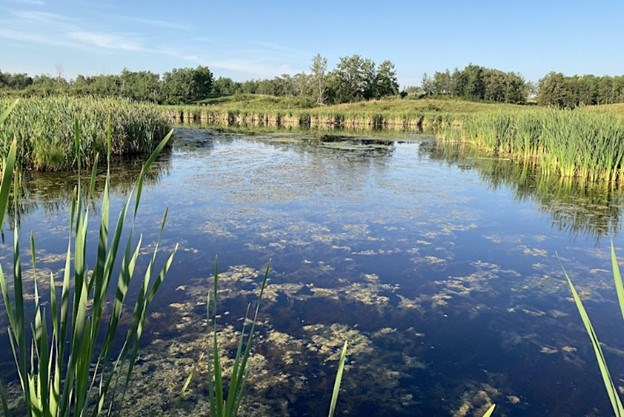Differing classification systems, conflicting regulations and/or legislation and competing priorities – it’s no wonder that watershed management can elicit debate whenever it comes up at the municipal, provincial or federal levels.
The Bow River Basin Council (BRBC), a non-profit watershed research group, strives to bring a non-partisan, scientific perspective to watershed issues from droughts to floods in Alberta, with events like the workshop they sponsored at the RancheHouse in Cochrane last Friday.
The all-day workshop was entitled Wetlands and Natural Infrastructure in a Changing Climate.
The BRBC’s legislation and policy committee chair Judy Stewart kicked things off with a lively presentation centred around the challenges faced by an inhabitant of a local pond – Bob the duck.
An engaging and passionate speaker, Stewart explained afterwards why she chose to frame her presentation on wetlands management around Bob and some of his neighbours, who all rely on healthy watersheds to survive.
“My grandson was listening to me working on my presentation and he said, ‘Grandma, this is boring,’ so I decided to liven it up,’” she said with a laugh.
Her presentation, while framed in language that an elementary school class would understand and enjoy, also struck a chord with the roomful of subject experts gathered to share their knowledge with each other.
How local governments grapple with wetlands management issues is an ongoing challenge, with jurisdictional overlap being a key factor.
One of the ultimate goals of the workshop was to provide some technical resources to municipal policymakers like the Town of Cochrane, which regularly grapples with things like wetlands management, especially when development permits are being debated. Recent examples: residents of the Willows in Cochrane and Cochrane Lakes are no strangers to these debates.
Concerned Willows residents organized a protest last Nov. 17, at a pond in their neighbourhood, as a show of support aimed at keeping the issue front of mind for Council, which must weigh the concerns of residents and developers.
The applicants for the proposed development appeared before Council at a three-hour public hearing last May. At that meeting, the 24 area residents expressed strong opposition to any development that would threaten or destroy the pond.
The Town’s Wetland Policy states that its purpose is to “clarify to the development industry, Town staff, and contractors the rules regarding the potential use and development of lands in proximity to wetlands and associated riparian lands.”
One of its Guiding Principles is listed as being to “Support innovative approaches to integrating natural wetlands into the urban setting that support maintaining their natural characteristics and functions.”
Friday’s workshop, which was attended by Town planners, was all about “Innovative approaches.”
One of those was Nicole Tomes, a senior planner with the Town. She said some of what she heard would be given consideration in finalizing the Town’s planning documents.
“It was great to connect with our watershed basin partners and learn best practices for wetlands in Alberta, from the tools to the talks and discussions of the day,” she said.
“As we move forward with implementing Envision Cochrane 2050 (once approved), it will be sensible for the Town to have thoughtful consideration of the watershed and wetlands are a part of that.”
Other presenters included representatives from the City of Calgary, post-secondary institutions, watershed research consultants, and other experts.
One recurring theme was that conservation efforts were best served by local decision-making.
Attendees broke into smaller discussion groups to brainstorm a variety of subjects, aimed at addressing some of the challenges facing municipal governments looking to develop wetland policies.
Stewart said she was encouraged by the level of expertise in the room but still had reservations.
“It boggles the mind how much expertise there is in the province and how we don’t use it,” she said.
The BRBC describes itself as a collaborative, multi-stakeholder non-profit organization. Their website expands on that description: “We are dedicated to facilitating meaningful dialogue and mutual understanding, and work to provide unique opportunities that lead to tangible impacts. Together, through science and inclusion, we promote balanced solutions for a healthy watershed.”




